“Glon, you’re in the Miura.”
Hang on, I’m in what now?
About a minute later, I have the keys to a 1973 Lamborghini Miura SV finished in Oro Metallizzato. Five minutes later, I’m annoyed by the frosty winter air whooshing onto my face but too enthralled by the V12’s noise to close the window. The person who coined the phrase “never meet your heroes” clearly hasn’t been let loose in the original supercar, a model of paramount importance in the pantheon of automotive history.
Unveiled in 1966, and positioned above the 400 GT as Lamborghini’s range-topping model, the Miura may as well have landed from a far, unexplored corner of the galaxy. It stretched about 172 inches long, 69 inches wide, and merely 41.5 inches tall, dimensions that gave it proportions more closely aligned with today’s definition of a supercar than with the crop of GTs whizzing by in the left lane of the Italian autostrada in the 1960s. I can’t say that the Miura broke with tradition, Lamborghini didn’t have much in the way of tradition three short years after its gutsy inception, but it looked nothing like the 400 GT.
Highly respected Italian designer Marcello Gandini penned the Miura while working for Bertone. Its Fiat 850 Spider-sourced headlights were mounted nearly flat, its door handles were integrated into a column of fins, and its roof line peaked above the seats before flowing into a Kammback-like rear end. Mamma mia! It may look humble parked next to an Aventador, but its design was revolutionary in the 1960s.
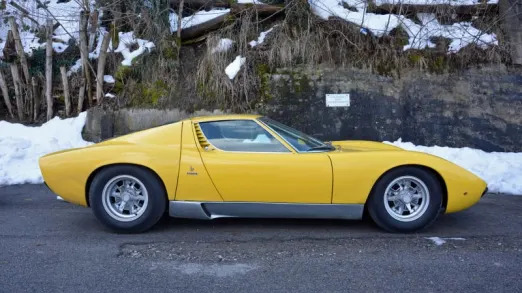
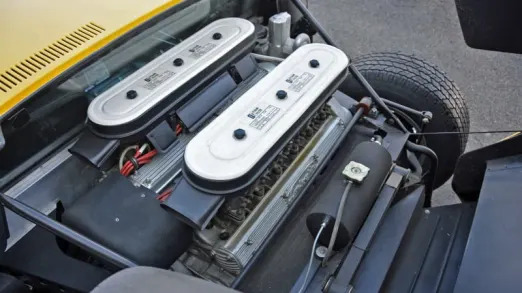
Equally revolutionary was the technical layout. While the 400 GT — and most high-end GTs sold during this era — were fitted with a front-mounted engine, the Miura’s 3.9-liter V12 was positioned directly behind the passenger compartment. Odder still, it was mounted transversally. Some historians claim that the inspiration for this arrangement was the original Mini, which stretched just 120 inches long thanks in part to a transverse-mounted engine. The Mini’s role in shaping the Miura has never been proven, but what’s certain is moving the engine back and turning it 90 degrees changed Lamborghini’s history.
More than simply a new model for what was then a small, obscure company, the Miura became nearly a deity in the automotive stratosphere. It blazed the course that dozens of supercars have followed since.
Rejigging the proportions required rearranging the interior. While most 400 GTs offered enthusiasts a 2+2 seating layout, the Miura landed as a two-seater with a markedly sportier cabin. The seat cushions were positioned at almost the same height as the door sills, while the headrests were attached to the piece of glass that separates the passenger compartment from the engine bay. The dashboard’s layout was different as well: the driver faced two big gauges housed in individual pods and a separate cluster made up of five additional gauges and a clock embedded into the tall, driver-oriented center stack.

In hindsight, the Miura stole the show at Lamborghini. It went through several evolutions until it retired in 1973, and it was sold alongside other models throughout its production run but few are remembered. Have you ever heard of the Islero? Likely not, unless you’ve got 20W50 oil running through your veins. Did you have a model of the Espada as a kid? I doubt it, but odds are you had a Miura in your toy box.
Lamborghini built only 763 units of the Miura, which partially explains why the model is worth a substantial amount of money in 2023. Auction house RM Sotheby’s sold a 1971 example for $3.58 million in January 2023. The example that Lamborghini handed me the keys to is a 1973 SV, so one of the last examples built, and it’s powered by an evolution of the original car’s V12 rated at 385 horsepower and 294 pound-feet of torque. Quad-carbureted, the engine spins the rear wheels via a five-speed manual transmission.
Step (way!) down into the Miura’s cabin and the openness immediately grabs your attention. While a lot of supercars old and new are cramped, difficult to see out of, or both, the Miura feels surprisingly airy and visibility over the long hood is excellent. The aforementioned interior layout creates this impression: there’s not much of a dashboard so the steering wheel is mounted close to the firewall and a couple of inches below the windshield. Visibility in pretty much every other direction is compromised: there’s no passenger-side door mirror, and you see two carburetors and a big air box if you look over your shoulder.
I’m not going to say that the Miura is easy to drive – it’s not. It’s a 50-year-old car with more power than a modern-day Volkswagen Golf R, a rear-biased weight distribution, and the driver’s common sense as the only driving aid. Factor in the car’s value and the first few miles are candidly nerve-racking. But, once you get the hang of how the throttle, the steering, and the brakes respond, the apprehension fades and you understand what the Miura is all about: then and now, Lamborghini peddles a unique type of driving fun.

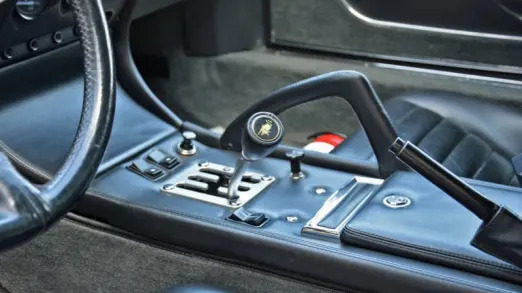
One part of the Miura’s magic is its drivetrain. It’s a car that stimulates nearly all of your senses (there’s nothing to taste — at least not that I know of), but your ears are in for a particularly pleasant surprise. The engine is mounted just a couple of inches away from the headrests, so sitting in the driver’s seat with the V12 at full song is like watching the Foo Fighters play “Learn to Fly” from the front row. It’s not just the engine: the fuel pump makes a distinct clicking sound after you turn the ignition on, for example, and the gears in the five-speed manual transmission let out a whining noise that’s almost race car-like. It goes without saying that this symphony is 100% authentic. Nothing is simulated or piped into the cabin.
“PANDA!” blares out of the walkie-talkie attached to the passenger-side seatbelt, and a few seconds later a first-generation Fiat Panda comes racing out of a blind corner with the force of a tropical storm. I take my foot off the gas pedal, give the steering wheel a quick flick to make space for the incoming hatchback, and I’m off again without downshifting — the V12 is happy to pick up where it left off. When you get used to its quirks, and if you’re not hovering too close to its limit, the Miura is predictable to drive. It’s not as unapologetically raw as, say, the Countach. The steering is quick and precise, the floor-mounted clutch pedal is reasonably light, and the gated shifter is a joy to operate. One of the many driver-focused details in the cabin is on the shift knob: it features a pair of grooves for your index and middle fingers.
Viewed through 2023’s technology-tinted glasses, the Miura is old-school in a charming way. What many tend to forget is that this is how all cars were during this era. I have a 1971 Fiat 850 sedan that’s also a loud, attention-hogging thing to drive. Ask an older relative about the pickup they drove in the 1970s and you’ll likely hear a similar description. And yet, the Miura pushes the envelope further. Even when cars were generally louder, someone at Lamborghini thought “this V12 sounds epic; let’s crank it up.”

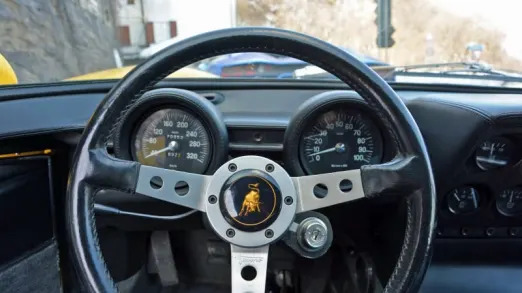
An interesting counterpoint to the Miura’s decades-old design is that, in some ways, it feels much newer than it is. You can draw several parallels between it and the Aventador: the V12 is happier in the upper echelons of the rev range, and you miss out on a great deal of the experience (not to mention on a great deal of the available power) if you shift up at 2,000 rpm. The seats strike a nice middle ground between support and comfort, and the brakes are strong and predictable regardless of the speed you’re slowing down from. Significantly, the Miura doesn’t pretend to be a race car. It was designed to be driven, across town or across a country, so it’s nicely finished inside. It’s even equipped with power-operated windows. Air conditioning was available as an option, but Lamborghini notes only one in five customers paid for it.
When my time behind the wheel was up, I handed back the keys and hopped into an Aventador Ultimae Roadster. The lineage is perceptible, and in many ways it’s not unlike the Miura: it’s low, wide, loud, and powered by a mid-mounted, naturally-aspirated V12, though the engine has 6.5 liters of displacement and a 760-horsepower output. Fast? Yep. Fun? Hell yes. And yet, I couldn’t get the Miura off my mind.
Performance and design made the Miura the first real supercar, but there’s more to it. It wears this label naturally and effortlessly; it’s a car with nothing to prove and nothing to hide. While the Countach is often celebrated as Lamborghini’s greatest hit, it’s the Miura that made the company what it is today. The fact that it continues to impress almost 60 years after its debut cements its status as a superstar.
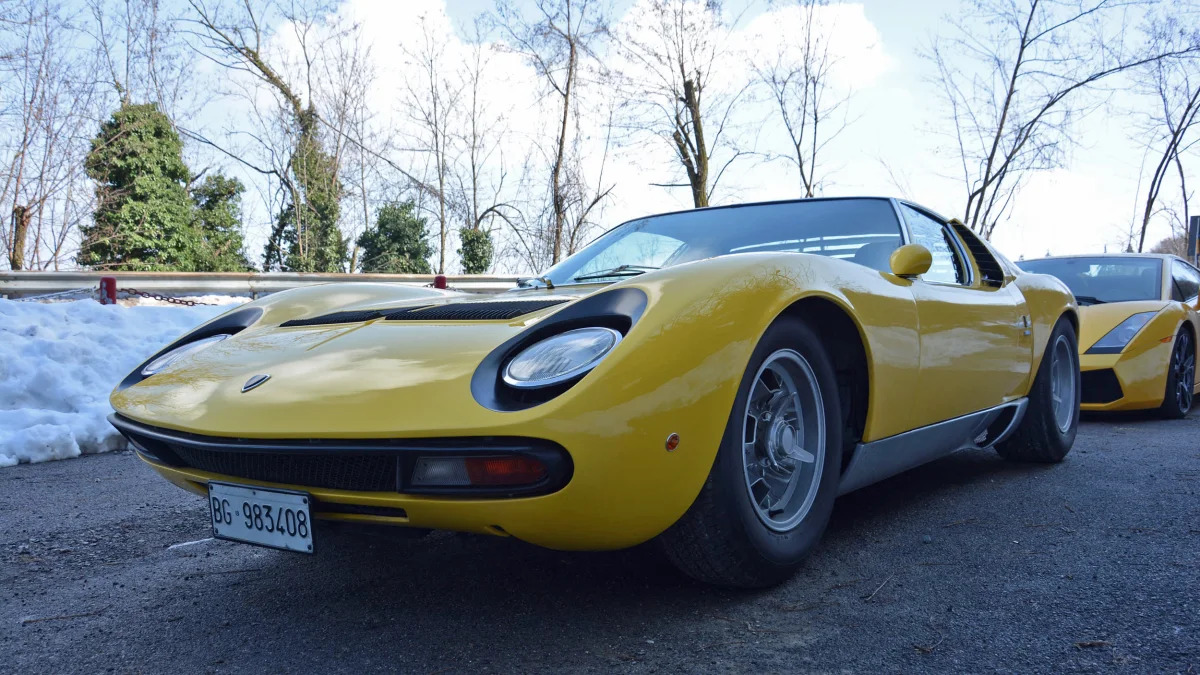









Sign in to post
Please sign in to leave a comment.
Continue